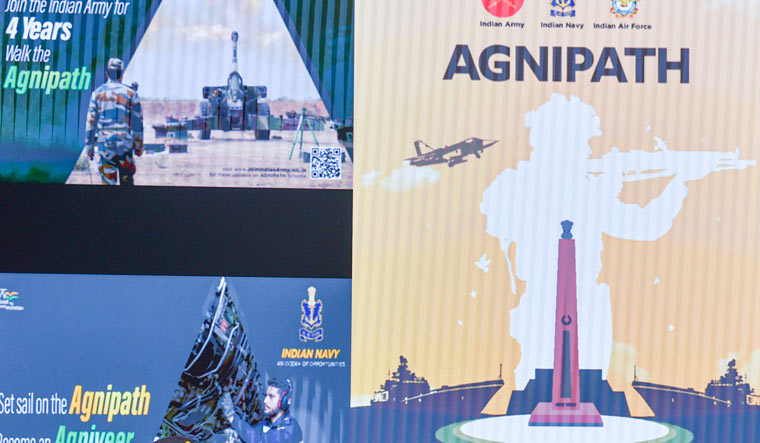After two years of drawing board planning, intense and detailed deliberations and discussions, with the onset of the New Year, the Indian military kick-started one of the biggest transformative processes in its history.
On Tuesday, 19,000 young men in the age group of 17.5 to 23 years trooped into various military centres across the country in their first step towards attaining warrior-hood.
In March, another 21,000 Agniveers—including women—will be taken in. In total, 40,000 Agniveers will be recruited this year for the three wings of the armed forces.
The upper age limit of 23 years is valid only for the batch that was selected in 2022. For subsequent batches, the upper age limit will be 21 years.
Beginning January 2, the training will continue for a six-month period after which the Agniveers will be sent to their respective units for further training.
Conceived under the Agnipath scheme, the new mode of recruitment for the Army, Navy and Air Force, is among the most radical of military reform measures along with the move towards setting up of theatre commands and integration effort.
The Agnipath mode basically tries to combine the key elements of experience and youth to recruit personnel below officer rank (PBOR).
After six months of training, the Agniveers will be in service for the next three-and-a-half years. On completion of four years, one-fourth or 25 per cent of the Agniveers will be re-employed for 15 more years based on merit, their intent and the organizational requirement.
The remaining three-fourths or 75 per cent would be adequately compensated with an attractive retirement package called ‘Seva Nidhi’.
Even as the scheme brings down the average age profile of the Indian soldier from 32 to 26 years, shaving off six years, it also lessens the burden imposed by the burgeoning salary and pension bill of the military which in turn had impacted the modernisation and acquisition plan of the country’s defence forces.
But many concerns have also been expressed including the possibility of the creation of a military that is under-trained, poorly motivated and inefficient, besides the dangerous consequences of ‘militarizing’ the society.




